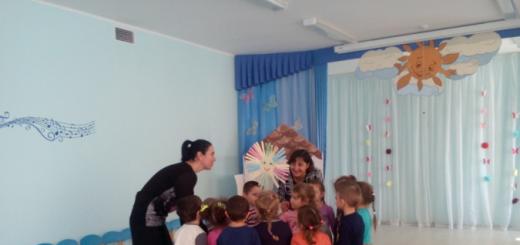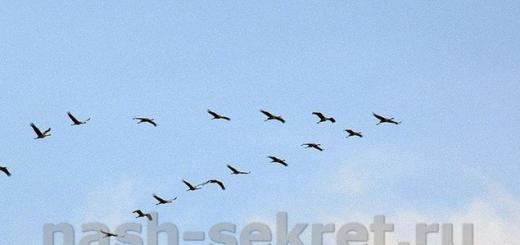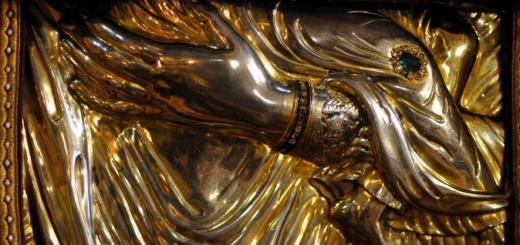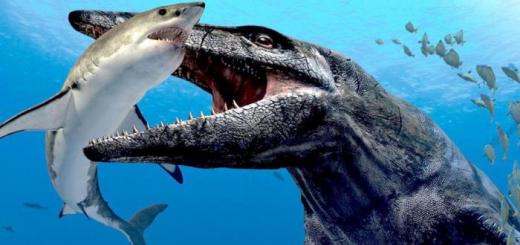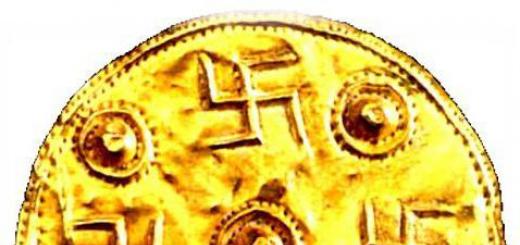Tradition says that Kikk Icon of the Mother of God was painted by the Apostle Luke and is a lifetime image of the Mother of God, who personally blessed this shrine.
Description and meaning
The image refers to the variety of "Eleus", which means "Merciful" differs in that the faces of the Mother of God and the Child on it are in contact. This detail is a symbol of divine love that extends to all living things.
Like the Smolensk face of the Heavenly Queen, Kykkosa to a certain extent resembles the Hodegetria, since her forehead is crowned with a crown.
One of the most revered image lists in Russia is located in the Nikolsky Monastery (Mukachev).
Why is Virgo closed?
It is not known exactly when this happened, but the Kikk image of the Blessed Virgin with the Son to its middle part (obliquely from the lower right to the upper left corner) was “covered” with a veil.
This cover does not allow those who pray to see the faces of the Mother and the Son, but no one seeks to violate their solitude. Moreover, the entire Kikk Icon of the Mother of God is completely hidden from prying eyes under a red velvet cover.
This unusual fact gave rise to a huge number of rumors and legends:
- it is possible that this rule was introduced at the direction of the Emperor Alexius Comnenus;
- the energy of the Kikk Icon of the Mother of God is so great that you can go blind because of it;
- the age of the shrine and the respect that parishioners have for it make it necessary to hide it under a cloth.
But every year, for one day, the faces of the Virgin and the Savior are opened and taken out to the neighboring mountain of the Throne, to perform a prayer service. However, even then they should not look at the image.
There is a legend that Patriarch Gerasim of Alexandria was bold enough to look at the faces without cover. For this he was punished with blindness. Realizing his sin, the clergyman spent days and nights in prayer, asking the Almighty for indulgence.
History
The initial residence of the Kykkos Icon of the Mother of God was one of the first Egyptian Christian communities, where it was transferred by the author himself. Further (in 980, when the first persecutions of Christians began), the Mother of God face was transported to Constantinople, where it remained until the beginning of the 12th century, when Alexy Komnenos ascended the throne.
It was then that the hermit Isaiah saw a sign, and which he learned that through his efforts the shrine would fall on the island of Cyprus. In order to translate his vision into reality, the elder needed to spend a lot of effort, but his efforts were not in vain.
Cruel Viceroy
The history of the "resettlement" of the shrine began with the fact that the Byzantine governor Manuel Vutomis, famous for his cruelty and heartlessness, went hunting in the Troodos wilds, where he fell behind the people accompanying him and got lost. On one of the mountain paths, he ran into a hermit.
Immersed in prayer, the elder did not see the governor and did not greet him properly. Manuel flared up and immediately hit Isaiah. After a while he again found his retinue and returned home safely.
However, later he was seized by an unusual illness that paralyzed his entire body. The viceroy's body continually weakened and withered. Feeling the approach of death, he decided to confess. Telling the priest about his sins, Manuel remembered the beating of the old man.
At that moment, he realized that his current state was a punishment for cruelty towards a monk.
vision of a hermit
At the same time, Isaiah, as always, was praying near a sprawling oak tree. And there he had a vision that a monastery would be erected on the rock of Kykkos, into which the Heavenly Virgin would come and remain there forever.
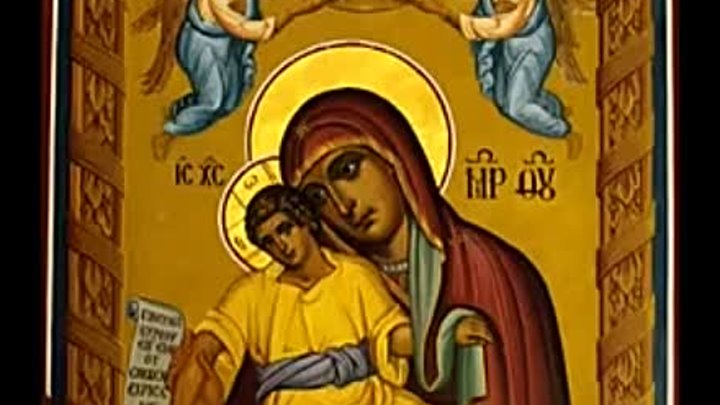
The creation of the monastery, according to the divine plan, was to be done by the elder himself. The monk, illuminated by an unexpected vision, was discovered by the retinue of the governor, who led him to the patient.
The prayer of the pious elder healed Manuel, and afterwards Isaiah asked him to deliver the Merciful Icon from the Byzantine palace to the island of Cyprus.
Visit to the Emperor
Overwhelmed with gratitude, Vutomis hurried to the emperor Alexis, whose daughter suffered from an illness similar to that which had previously seized Manuel. Having learned about the misfortune of his master, the governor told about how the monk helped him.
The elder, once in the palace, first of all asked to give him the icon if the imperial daughter recovered. After that, he immediately prayed, and the heiress immediately recovered.
Trial
However, a problem arose, "" was one of Alexy's favorite icons and he did not want to give it away. Then the emperor made a copy of the image and invited Isaiah to guess which of the faces is genuine.
It was difficult to make a choice, and the monk turned to the Lord, asking for help. At that moment, a bee flew into the palace and sat on a real icon, marking it with itself. Since that time, the bee has been used as a distinctive sign of the abbot of the Kykksky monastery.
The appearance of the image in Cyprus
The inhabitants of the island greeted the Kikk Icon of the Mother of God with great joy and reverence. To the very top of the mountain, she was accompanied by a religious procession. The shrine was honored not only by people, but also by nature - bowed trees are still one of the most amazing features of this place. The construction of the monastery dedicated to the image was personally paid for by Manuil Vutomis himself.
Only once on the island of "Kykkosa" became famous as a miraculous image. And to this day, believers come to the monastery built in her honor to be healed of their ailments and ailments.
Particularly curious is the fact that not only Christians ask and receive help from the Kikk Icon of the Mother of God. "Merciful" answers the prayers of all those who suffer, leaving no one in trouble.
Kykkos Monastery
It is in this strauropegial male monastery that the image of Our Lady "Merciful" is kept. Another name for this richest and most famous Cypriot monastery is the Holy Royal Monastery of the Kykkos Icon of the Mother of God.
The founder of the monastery was the ruler of Byzantium Alexy Komnenos. Its buildings are located at an altitude of 1140 meters above sea level, near the Troodos (mountain system). The buildings that exist there at the moment can be attributed to different historical periods.
The central part of the complex is occupied by the temple. Along its perimeter are:
- monastic cells;
- reception rooms;
- cathedral room;
- abbot's house;
- Museum;
- library.
Not far from the monastery stands the bell tower, rebuilt in 1882. It houses a huge bell weighing more than a ton - a gift from Tsarist Russia to the monastery. In addition, a paved courtyard with a well dug in the center is equipped on the territory of the monastery.
Initially, all the premises were wooden, since the peak of Mount Kykkos is located near the Paphos forest, and wood was the most accessible material for building buildings. The inner surface of the skete was decorated with frescoes and mosaics, but this happened only in 1991-1993. The authors of the images were the Kipola brothers, as well as other Romanian and Greek masters.
What do they pray for and what helps
The Kikk Icon of the Mother of God is revered as the most precious relic of the Cypriot monastery. She helps in any business, but more often than usual, they turn to her for healing from mental and bodily ailments.
In the monastery you can see numerous testimonies of the divine power of the face of the Virgin, for example:
- the language of the swordfish, or rather a small part of it (there is a legend that this creature tried to destroy the ship and the pilgrims sailing on it almost drowned, but the Queen of Heaven saved them all);
- a cast of the withered hand of a pagan who wanted to desecrate or destroy the miraculous face.
You can ask the Kikk Icon of the Mother of God:
- about rain in dry times;
- about the conception of a baby (about the cure of infertility);
- about getting rid of deafness and dumbness, headaches, bleeding;
- on the cessation of natural disasters;
- about establishing relationships in the family, ending quarrels;
- about the cessation of lack of money;
- about resolution from misfortunes;
- about salvation from epidemics.
In rare cases, with all the passion, praying before the image, you can practically pull a person out of the next world.

